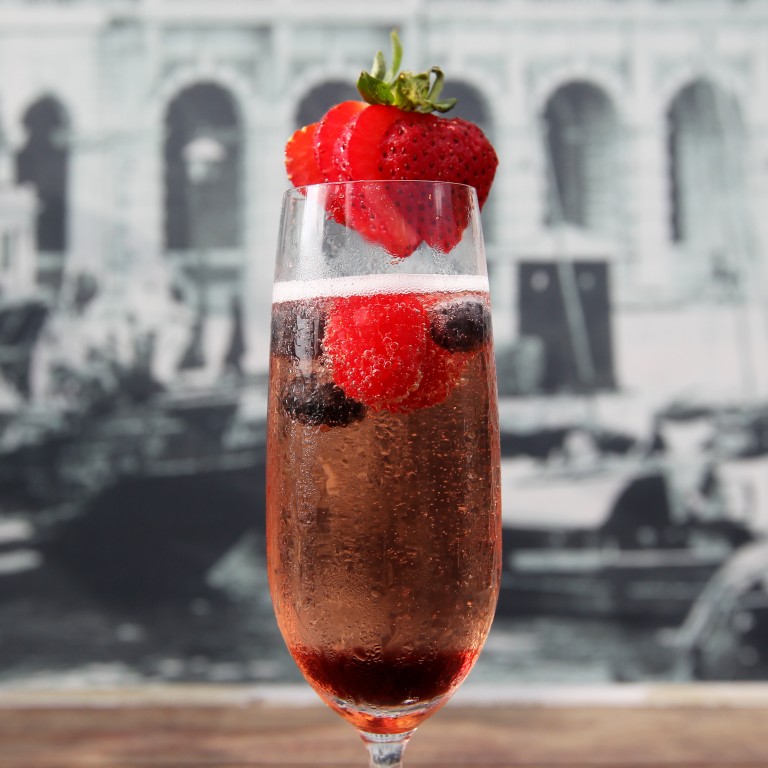Champagne adds fizz to new cocktails and lifts food pairing to fresh highs

The winter holiday season is almost here, which for many people means one thing: Champagne. Some might feel like they never need an excuse for bubbles, but with sparkling wine served at every cheerful occasion throughout the year, you can be forgiven for feeling a bit blasé.
Don’t dismiss Champagne just yet. This year, restaurants and bars around Hong Kong are offering a new twist on the renowned French bubbly by incorporating it into cocktails, pairing it with food or focusing on the distinctive, terroir-driven offerings of independent viognier growers.
“The biggest misconception about Champagne is that it is a product for parties or special occasions,” says sommelier Nicolas Deneux, general manager of ON Dining Kitchen & Lounge, who also produces his own brand of Champagne.
“The general perception is that if it has bubbles, people don’t treat it seriously as wine,” says Patty Sze, manager of the Mandarin Oriental’s recently revamped M Bar. “We tell people that Champagne has a wide variety of tastes. It’s not just about bubbles.”
That’s obvious in offerings like Vilmart & Cie’s Grand Cellier Premier Cru, a blend of chardonnay and pinot noir grapes. “It’s fuller in body, and more yeasty and toasty because it’s been in the cellar for four years,” Sze says. “It’s very savoury.”
For the uninitiated, M Bar offers a tasting flight of three Champagnes - a Diebolt-Valois Blanc de Blancs Prestige Brut, La Closerie Les Beguines’ Blanc de Noirs Brut and Vouette et Sorbée’s Saignée de Sorbé Extra Brut Rosé - as an introduction to the spectrum of what Champagne can offer. “Wine is something very subjective, very personal, but we explain the background of each one to help people understand what they’re tasting,” Sze says.
That approach is shared by ON Dining Kitchen & Lounge, where Deneux maintains a list of 40 to 50 Champagnes de vigneron - wine produced by the growers themselves, as opposed to large Champagne houses that blend wine from multiple vineyards. “I tend to work more and more with smaller producers because the notion of terroir is more respected,” Deneux says.
“Most of the time [they are] younger producers that, after working for others, go back home and go back to more terroir-focused wines,” Deneux says. “Alexandre Chartogne from Chartogne-Taillet is a perfect example, alongside Emmanuel Lassaigne from Jacques Lassaigne. Others such as Laurent Champs from Vilmart, Rudolphe Peters from Pierre Peters, Larmandier-Bernier and Frederic Savart are also starting to be out there.”
This variety makes Champagne an ideal choice for food pairing. “I truly believe that Champagne makes the only wines that can go with everything,” Deneux says. The high acidity, variable sweetness and range of textures mean there is a Champagne for every dish - even notoriously difficult ingredients like tomatoes, asparagus and eggs.
Deneux recommends pairing young blanc de blancs Champagnes, made entirely with chardonnay grapes, with a creamy, mild cheese such as a Brillat-Savarin. Pinot noir Champagnes hold up well to more assertive flavours. M Bar recently introduced a new menu of bar snacks prepared by Pierre, the Mandarin Oriental’s Michelin-starred restaurant. It includes dishes such as ceviche with green bell pepper sherbet, which pairs particularly well with a blanc de blancs.
Serious Champagne pairing might not be everyone’s glass of bubbly, especially during the holidays. Luckily, there are plenty of more lighthearted ways to enjoy Champagne. Veuve-Clicquot recently introduced Rich, a sweet Champagne meant to be served on the rocks, with a garnish. It’s an apéritif that serves a similar purpose as a gin and tonic, though that isn’t quite as unorthodox as it may sound. Shipwrecked bottles of Veuve-Clicquot from the 1840s that were discovered last year in the Aland Sea contained 150 grams of sugar per litre, compared to nine grams for Veuve-Clicquot’s Yellow Label and 6 grams for particularly dry Champagnes like those produced by Krug. Because Champagne undergoes a secondary fermentation in the bottle, extra sugar is added to feed the yeast, and the amount of this dosage, as the added sugar is known, serves as a calling card for each different Champagne.
“These wines that were blended for greater sweetness were customarily described as ‘rich’,” says Veuve-Clicquot brand manager Timothea Slorach. Veuve-Clicquot Rich, with a dosage of 60 grams per litre, pays homage to that tradition. Veuve-Clicquot cellar master Dominique Demarville compares the dosage to “spices in a recipe - used correctly it can bring out specific aromas and play with taste”.
Cocktails are another easy-going way to enjoy Champagne. Hullett House offers two unusual concoctions in its Champagne Gallery. “Balance is important because Champagne is pretty high in acidity,” says manager Amy Leung. The Clever Girl cocktail combines Veuve-Clicquot Champagne with peach purée, sake and the Japanese yoghurt soda Calpis. The Dragon’s Back makes use of passion fruit, vodka, basil, strawberries and lychee liqueur.
M Bar offers a more extravagant take on the Champagne cocktail with a HK$1,555 blend of Dom Pérignon Brut 2006, Remy Martin Louis XIII Cognac and gold flakes. “It’s very luxurious,” Sze says. Of course, Champagne doesn’t have to be luxurious. It can be a cheerful holiday tipple or a complex, serious dinner partner. Either way, Deneux says, it’s a wine to relish. “There are no rules with Champagne. And many surprises.”
This article was originally published on scmp.com
Want more articles like this? Follow STYLE on Facebook

The beloved celebration drink is being reinvented for the festive season